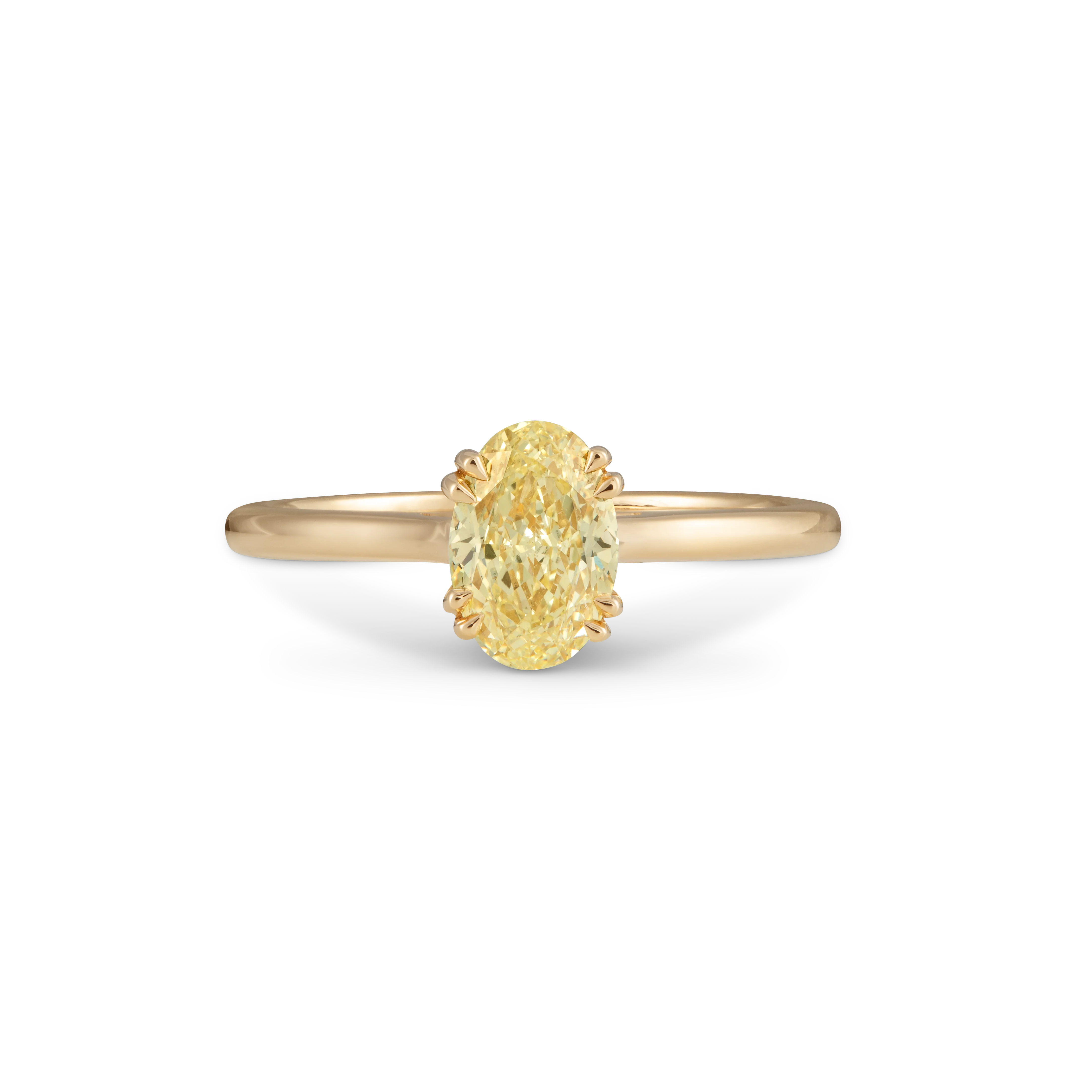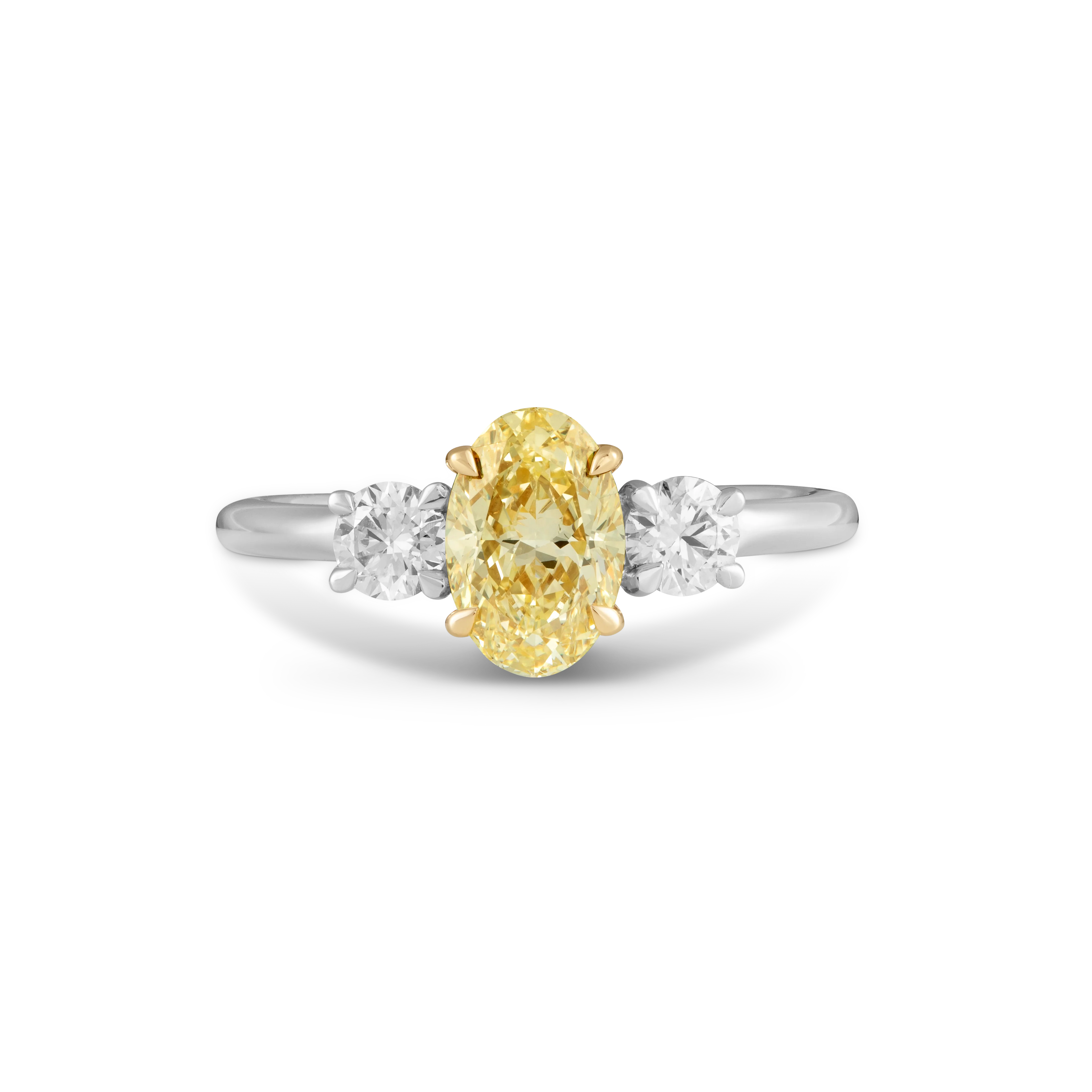
Our Diamonds
Same sparkle, different source
We pride ourselves on providing you with the gold standard of responsibility and quality within the jewellery industry.
Lab Grown Diamonds
Created using more rapid and scalable methods, standard lab-grown diamonds undercut the price of mined diamonds by up to 5x. Like Solar Diamonds and naturally mined diamonds, they are chemically and physically identical, offering the same brilliance, hardness (10 Mohs) and lustre. The difference solely lies in their origin. 1 ct starts from £1,150
Solar Diamonds®
An environmentally friendly option, our premium Solar Diamonds are lab-grown with renewable solar energy and are hand-selected by our team for you. Both chemically and physically identical to naturally mined diamonds they share the same brilliance and hardness (10 Mohs), but can undercut mined diamonds in price by up to 4x. 1ct starts from £2,500
Naturally Mined Diamonds
Naturally mined diamonds are those formed in the ground over thousands of years. It is this process that is recreated to form Solar Diamonds. We have been working hard to find only the best suppliers for you, to ensure your naturally mined diamonds are conflict-free and always compliant with the Kimberley Process. 1ct starts from £4,965
We are always committed to finding ways to offer exceptional value without compromising on provenance or quality. We are incredibly proud to be the only UK retailer of Solar Diamonds®, and as such we are able to offer them at exceptional value, often undercutting a naturally mined diamond equivalent by 2-4x. We understand the need for choice however, and that’s why we have spent the last year researching suppliers offering standard lab-grown diamonds, as well as conflict-free naturally mined diamonds.
Responsibly Grown
Certified B‑Corp
Highest Quality
The Four C's
Cut
Cut
When talking about cut, we typically think of shape (such as round, oval, emerald, princess, pear and cushion) but the cut of a diamond actually refers to its facets. It’s how the light interacts with these facets that distinguishes a higher-quality of diamond. Skilled workmanship and laser cutting along with symmetry and polish, delivers the maximum return of light, completely unique to diamonds.
Some terms you may come across when referencing the cut of a diamond are:
Brightness: The internal and external white light that reflects from a diamond
Fire: The scattering of white light to produce a rainbow of colours
Scintillation: The amount of sparkle a diamond has, and the combination of light and dark areas caused by reflections within the stone.
Colour
Colour
While the diamond colour scale provides an example of how each grade appears, factors including cut, carat weight and shape, may impact how colour appears differently among different diamonds.
It is also worth noting that typically, the naked eye cannot tell the difference between two adjacent colour-graded diamonds, though this may be significantly reflected in the price between the two stones. It is worth checking the opinion of the gemologist in your appointment to ensure that you get the best-suited diamond for you.
Clarity
Clarity
The term “eye-clean” is often used when discussing diamond clarity. This refers to inclusions or internal blemishes that may be visible only under magnification, and not to the unaided eye. It can occur that two diamonds of the same clarity grade may appear slightly different as one may be eye clean and the other not, depending on where the inclusions are placed inside the stone.
The scale of clarity is categorised by:
Flawless (FL): no inclusions or blemishes visible under 10x magnification.
Internally Flawless (IF): no inclusions visible under 10x magnification.
Very, Very Slightly Included (VVS1 and VVS2): inclusions so slight they are difficult for a professional to see under 10x magnification.
Very Slightly Included (VS1 and VS2): inclusions are observed with effort under 10x magnification but are minor.
Slightly Included (SI1 and SI2): inclusions are noticeable under 10x magnification.
Included (I1, I2, and I3): inclusions are obvious under 10x magnification which can affect the transparency and brilliance of the diamond.
Carat
Carat
One carat is defined as 200 milligrams, with each carat divided into 100 points, allowing for precise measurements to a hundredth decimal place, so one-carat measures 0.2 grams. The term carat is derived from the carob seed, which measures the same 200 milligrams, this seed was used as it was seen as a reliably consistent weight. Using carats as a measuring tool was standardised in 1907, creating a universal system to prevent any varying carat weights.
Choose your Diamond, create your ring

Can't see the Diamond for you?
If you can't find the Diamond you were looking for, we can source a bespoke Diamond especially for you. Simply fill out the form and we will be in touch.
LIMITED EDITION YELLOW SOLAR DIAMONDS

Lab Grown Yellow Solar Diamond Halo 18K Yellow Gold Ring

Lab Grown Yellow Solar Diamond Solitaire 18K Yellow Gold Ring

Lab Grown Yellow Solar Diamond Trefoil 18K Yellow Gold Ring

Lab Grown Yellow Solar Diamond Trilogy Platinum Ring
The Kimberley Process
Our naturally mined diamonds all adhere to the Kimberley Process Certification Scheme (KPCS). This is an ongoing initiative backed by governments of a number of the major diamond-producing countries such as Australia, Botswana, Canada, Lesotho, South Africa, and the USA, as well as the wider international diamond industry. The KPCS was created with the aim of controlling and reducing or eliminating the flow of conflict diamonds linked with human rights abuses and the funding of armed conflicts. It requires each supplier or manufacturer to receive and pass on a warranty statement of compliance each time diamond pieces are bought or sold. If you would like to know more, please reach out to our Concierge team for further information.
FAQs
What is the difference between Solar lab-grown Diamonds and Lab Grown Diamonds?
What is the difference between Solar lab-grown Diamonds and Lab Grown Diamonds?
What are the environmental impacts of Solar Diamonds vs naturally mined diamonds?
What are the environmental impacts of Solar Diamonds vs naturally mined diamonds?
Why are naturally mined diamonds more expensive than Solar Diamonds?
Why are naturally mined diamonds more expensive than Solar Diamonds?
Does Diamond aftercare include the same things as other jewellery aftercare?
Does Diamond aftercare include the same things as other jewellery aftercare?
Find out more
For more information on our Diamonds, processes and policies, please see our FAQs
Read the full FAQs









